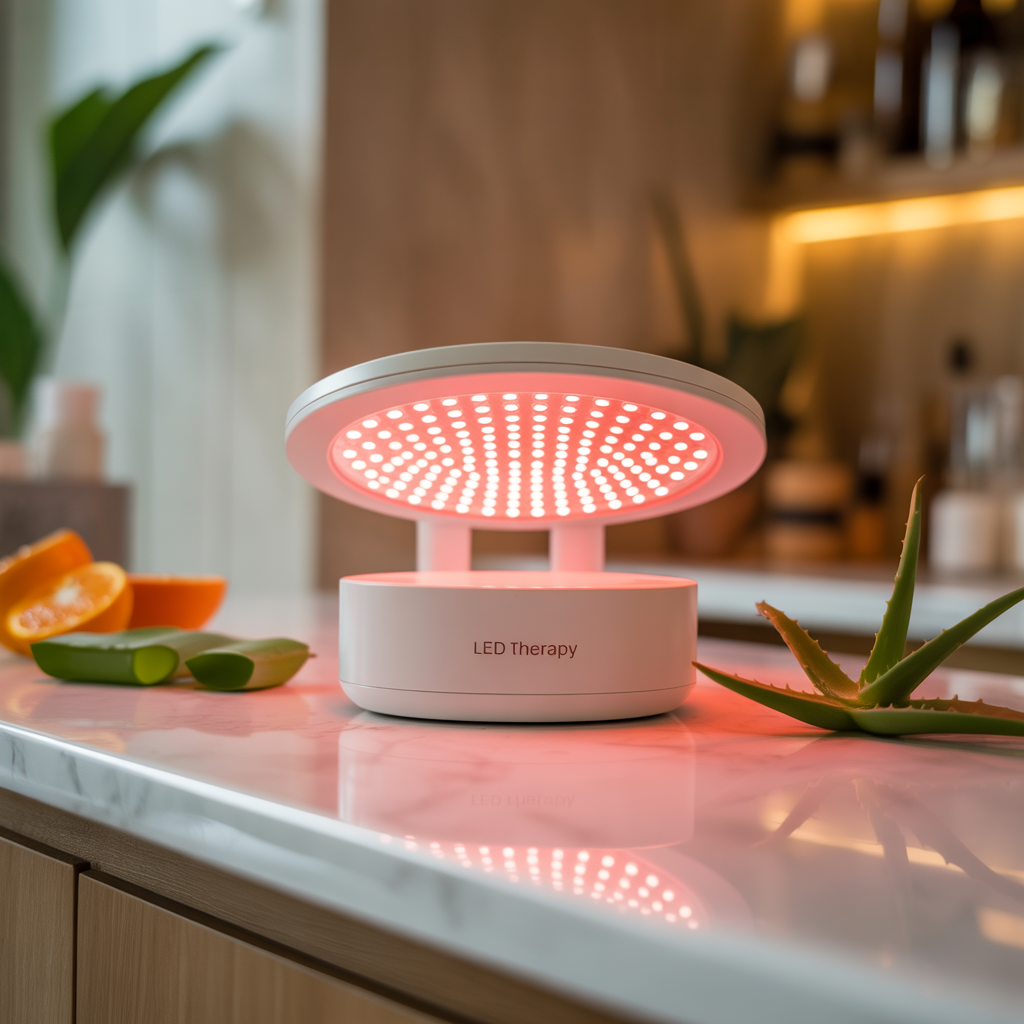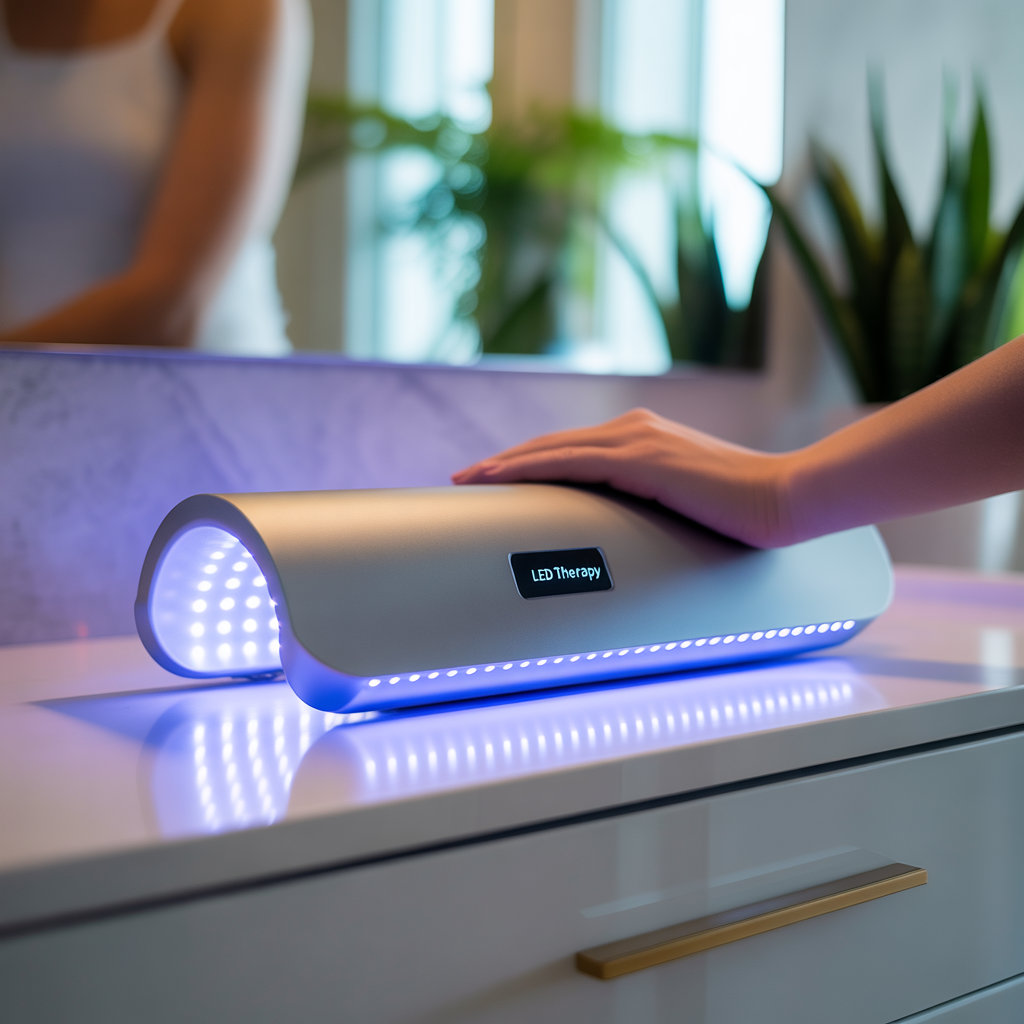What’s the Best LED Light Therapy? Different LED Therapies
Are you curious about the benefits of LED light therapy? This comprehensive guide will explore the different types of LED light therapy, their applications, and help you determine which one is best suited for your needs. We’ll delve into the science behind it, discuss its various uses, address common concerns, and ultimately help you make…
Are you curious about the benefits of LED light therapy? This comprehensive guide will explore the different types of LED light therapy, their applications, and help you determine which one is best suited for your needs. We’ll delve into the science behind it, discuss its various uses, address common concerns, and ultimately help you make an informed decision. You’ll learn about wavelengths, intensities, treatment durations, and more to ensure you understand how to select and effectively use LED light therapy.
What’s the best LED light therapy? Red and near-infrared LED light therapy is considered the best for most uses. It’s highly effective for skin rejuvenation, anti-aging, wound healing, and muscle recovery. Look for FDA-cleared devices with wavelengths between 630–850 nm for optimal results. Brands like Joovv and Mito Red are top-rated.
LED light therapy, also known as photobiomodulation, uses specific wavelengths of light to interact with the skin and underlying tissues. This interaction stimulates cellular processes, promoting healing, reducing inflammation, and improving skin health. Unlike lasers, LED devices emit light across a broader spectrum, providing a gentler approach.
Different wavelengths of light penetrate the skin to different depths, each affecting specific cellular processes. Red light (630-700nm), for example, penetrates deeply, stimulating collagen and elastin production. Blue light (400-470nm), on the other hand, targets bacteria and helps treat acne. Near-infrared (NIR) light (780-1000nm) penetrates the deepest, potentially reducing pain and inflammation.
What’s the Best LED Light Therapy?
Types of LED Light Therapy Devices

LED light therapy devices come in various forms, from handheld wands to larger, more powerful panels. Handheld devices are suitable for spot treatments, while larger panels allow for more comprehensive coverage. Some devices offer multiple wavelengths, providing flexibility for addressing various skin concerns.
Read More: What Is CRI LED Lighting? A Comprehensive Guide
Wavelengths and Their Effects
Red Light (630-700nm)
Red light therapy is known for its anti-aging effects. It stimulates collagen and elastin production, leading to firmer, smoother skin. It also improves blood circulation and reduces inflammation.
Blue Light (400-470nm)
Blue light is effective in treating acne. It targets the bacteria that cause acne breakouts, reducing inflammation and preventing future breakouts.
Near-Infrared (NIR) Light (780-1000nm)
NIR light penetrates deeply, reducing pain and inflammation. It’s often used to treat muscle pain, arthritis, and other inflammatory conditions. Some studies suggest it may also promote wound healing.
Amber Light (590nm)
Amber light promotes lymphatic drainage and reduces inflammation. It can be particularly beneficial for sensitive skin.
Benefits of LED Light Therapy

LED light therapy offers a wide range of benefits for the skin and overall health. These benefits include:
-
- Reduced wrinkles and fine lines
- Improved skin texture and tone
- Reduced acne and breakouts
- Reduced inflammation and redness
- Faster wound healing
- Pain relief
Read More: What Is a 12 W LED in Incandescent Light? Need to Know Everything
Limitations of LED Light Therapy
While LED light therapy is generally safe and effective, it has some limitations. Results may vary depending on factors such as skin type, condition being treated, and the quality of the device. It’s not a quick fix, and multiple treatments may be required to achieve significant improvement. Furthermore, some individuals might experience minor side effects like temporary redness or irritation.
Choosing the Right LED Light Therapy Device
The best LED light therapy device depends on your individual needs and budget. Consider the following factors:
-
- Wavelengths offered
- Treatment area coverage
- Intensity of light
- Ease of use
- Device features (e.g., timers, different intensity settings)
- Price and warranty
Setting Up Your LED Light Therapy Treatment
Before starting treatment, read the manufacturer’s instructions carefully. Cleanse your skin thoroughly before each session. During treatment, maintain a safe distance from the device as specified. Follow the recommended treatment duration and frequency. Remember consistent use is key to seeing results.
Read More: Dimming An LED: What Electronics Component Would Fade an LED Light Bulb?
Comparing Different LED Light Therapy Devices
Several brands offer high-quality LED light therapy devices, each with its own strengths and weaknesses. Research reviews and compare specifications before making a purchase. Look for devices that are FDA-cleared or CE-marked, ensuring safety and efficacy.
LED Light Therapy vs. Other Skin Treatments
LED light therapy can be used in conjunction with other skin treatments, such as chemical peels or microdermabrasion. It can enhance the results of these procedures and promote faster healing.
LED Light Therapy for Acne Treatment
Blue light therapy is particularly effective for treating acne. It targets the bacteria responsible for breakouts, reducing inflammation and preventing future blemishes. Combining blue light with red light can provide even more comprehensive treatment.
LED Light Therapy for Anti-Aging
Red light therapy stimulates collagen and elastin production, leading to firmer, smoother skin. It can reduce the appearance of wrinkles and fine lines, improving overall skin texture and tone. Combining red light with near-infrared light may enhance these effects.
LED Light Therapy for Wound Healing
Studies have shown that red and near-infrared light therapy can accelerate wound healing. It stimulates cell regeneration, reduces inflammation, and promotes tissue repair. It is important to consult a healthcare professional for any chronic or severe wounds.
Safety Precautions for LED Light Therapy
While generally safe, certain precautions should be taken. Avoid direct eye exposure to the light. Do not use the device on open wounds or broken skin. If you experience any adverse reactions, discontinue use and consult a healthcare professional.
Read More: 12 Creative Hallway Ceiling Light Ideas & Hacks
Maintaining Your LED Light Therapy Device
Proper maintenance ensures the longevity and effectiveness of your device. Clean the device regularly following the manufacturer’s instructions. Store it in a cool, dry place, away from direct sunlight.
The Cost-Effectiveness of LED Light Therapy
The initial investment in an LED light therapy device can vary widely depending on features and quality. However, compared to ongoing professional treatments, it can be a cost-effective option in the long run, offering long-term benefits and potential cost savings over repeated salon visits.
Frequently Asked Questions
What is LED light therapy used for?
LED light therapy is used to treat a variety of skin conditions, including acne, wrinkles, and age spots. It can also be used to reduce pain and inflammation, promote wound healing, and improve overall skin health.
Is LED light therapy safe?
Yes, LED light therapy is generally considered safe when used as directed. It’s non-invasive and doesn’t carry the risks associated with some other treatments.
How long does it take to see results from LED light therapy?
The time it takes to see results varies depending on the individual and the condition being treated. Some people may see improvements after a few treatments, while others may need several weeks or months of consistent use.
How often should I use LED light therapy?
Treatment frequency depends on the device and the condition being treated. Follow the manufacturer’s instructions for optimal results. Usually, it is recommended multiple sessions a week for optimal results.
Are there any side effects of LED light therapy?
Side effects are rare but can include temporary redness or mild skin irritation. These usually subside quickly.
Can I use LED light therapy while pregnant or breastfeeding?
Consult your doctor before using LED light therapy if you are pregnant or breastfeeding.
How do I choose the right LED light therapy device?
Consider the wavelengths offered, treatment area coverage, intensity, and ease of use. Read reviews and compare devices to find one that fits your budget and needs.
Final Thoughts
LED light therapy is a versatile and effective treatment option for a wide range of skin concerns and health issues. By understanding the different wavelengths, their benefits, and choosing the right device, you can harness the power of light to improve your skin’s health and overall well-being. While individual results may vary, the consistent use of a high-quality LED light therapy device can lead to significant improvements in skin tone, texture, and overall appearance. Remember to always consult with a dermatologist or healthcare professional before starting any new treatment, especially if you have pre-existing skin conditions or concerns. Investing in your skin health is an investment in yourself – explore the potential of LED light therapy and discover its transformative power.

